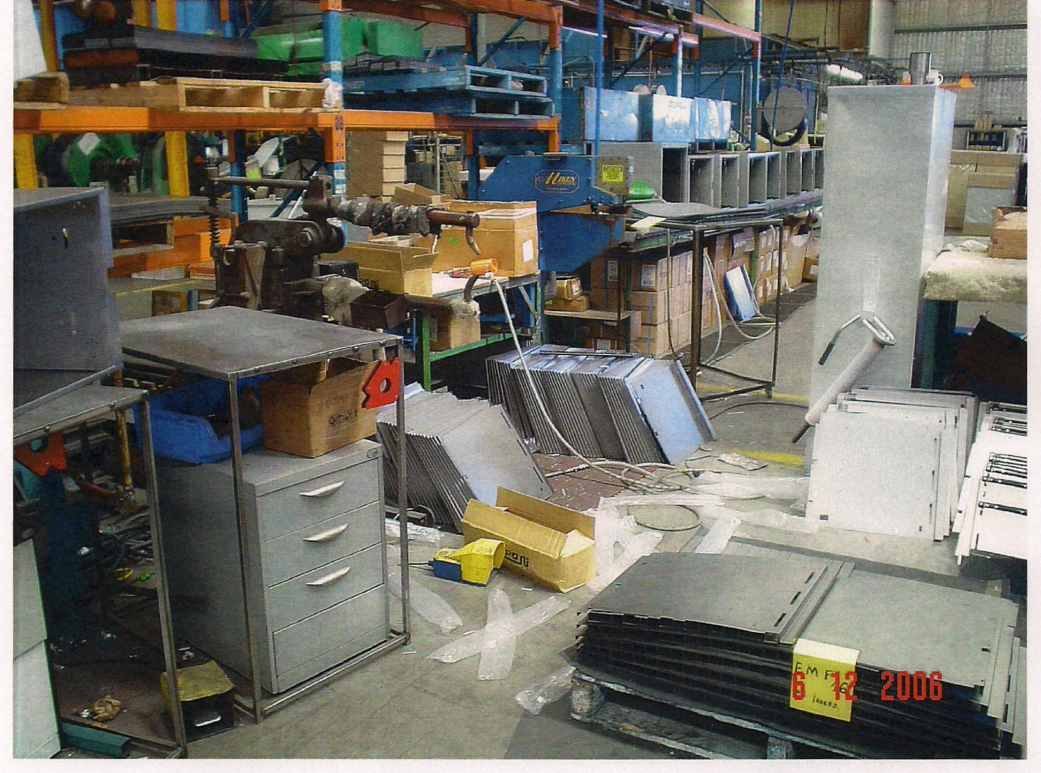Judging from this photograph, one can identify at least two types of wastes that are inherent to this company; namely waiting and transportation. It is quite probable that the employees of this enterprise have to continuously wait for the delivery of materials. There is a very long lag between different production steps due to this disorderly storage of inventory. Furthermore, we can suppose that they have to move materials from one place to another when they search for specific component or tool. This can also be viewed as excessive transportation. It is possible to take several steps to address each of these problems. In particular, we will focus on the first three phases of 5S methodology.
The first step that need to be taken is sorting; essentially, one has to remove those tools and materials which are not necessary for production process. The workers need to divide inventory into three groups:
- tools and materials that are continuously used by manufactures;
- tools that are not used at the given moment but can be used in the future;
- either defective or unused material that should be eliminated (Hobbs, 2004, p 130).
This will allow the management to reduce the time they spend on waiting, especially when they need to deliver materials and tools. Overall, the sorting of materials is essential effective time management in an organization. The second way of minimizing these wastes is to set these materials and tools in order. It is necessary to designate location for every piece of inventory and make it easily identifiable (Ortiz, 2008, p 72). The main objective of this step is to make inventory more accessible to the workers, so that they did not have to look for them for a long time, since this may lead to the stoppages of the production process and unnecessary movement of inventory. These action steps can eliminate each of the two wastes that we have identified in the introduction.
The third step of 5S methodology is to keep the place tidy and well organized (Hobbs, 2004, p 130). The thing is that a clean workplace allows the management to see defects in the production or inventory. An untidy workplace can conceal lack of quality or rejected components. The strategy is more applicable to such waste as transportation since the employees, who are working in untidy conditions often misplace components and spare parts; subsequently, they have to look for them for a very long time. In this case, cleanliness can reduce unnecessary movement of workers and materials. This is why one should not suppose that systemic cleaning of the workplace cannot contribute to the effectiveness of an enterprise.
The strategies that we have described can reduce waste to a minimum or even eliminate them. As far as waiting is concerned, we can say that they decrease the lags between production steps and turn manufacturing into a continuous process. Secondly, the workers will not have to spend much time, searching for components or spare parts. 5S methodology eliminates those activities which are not related to the process of production. Secondary, by setting the materials in order, the employees will be able to avoid unnecessary movements from one place to another. Apart from that they will not move materials to incorrect locations. These three phases lies at the core of lean production; without them effective management of resources is hardly possible.
References
College of Manufacturing Excellence. (n. d) A Brief Introduction Lean Manufacturing.
Hobbs D. 2004. Lean manufacturing implementation: a complete execution manual for any size manufacturer. London: J. Ross Publishing.
Ortiz C. 2008. Lessons from a lean consultant: avoiding lean implementation failures on the shop floor. Prentice Hall.